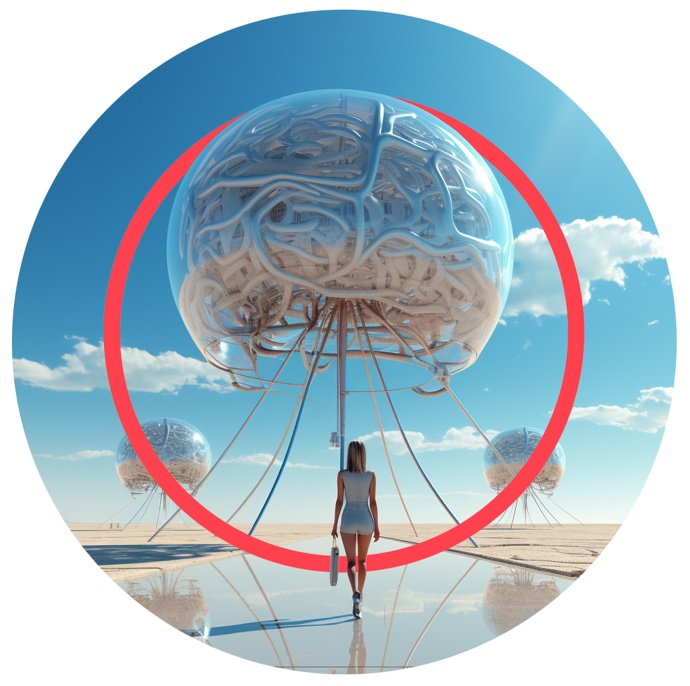What issue can we solve for you?
Type in your prompt above or try one of these suggestions
Suggested Prompt



Public Sector
How Residents Will Navigate Government Services as Gen AI Evolves
Generative artificial intelligence (gen AI) is more than just a buzzword. It has the potential to be a useful tool in the toolbox for government agencies and presents new ways of working and engaging with residents. There’s a lot to consider. To get started, federal and state and local agencies must be upfront with defining gen AI. This lays the groundwork for transparency and knowledge-sharing with residents, as well as serves to understand how residents interact with government services and AI.
“Residents have the right to know whether they are talking to a human or an AI bot.”
Aseem Gupta , Executive Client Partner, State & Local
Why gen AI will transform government agencies
For governments, 2024 will be about exploring new ways of engaging with residents. By this time next year, the public sector will be updating transparency guidelines and providing clarity on how generative AI is being used when it comes to government interactions with residents.
As machine learning accelerates with new human input on a near-constant basis, AI functions such as chatbots are becoming more “human” and articulate in their responses, being able to recognize “sentiment” in real time by interpreting voice, text and tone clues.
This has implications for operational efficiency and personalization of experience. Government agencies will need to create transparency and effective data governance around how customer service is delivered and whether it’s a human or computer at the other end of the phone line.
Gen AI is the future in 2024: more detailed use cases
In order to build the best use cases for ever-evolving tech applications, both federal and state and local (S&L) agencies must start by defining what gen AI means to the public sector, including understanding what forms of gen AI residents are already using.
Agencies are already automating routine processes that are well-bound and established. Looking to the future, federal agencies have questions similar to those of commercial counterparts—questions such as, "What is AI and what are its potential use cases?" While there is apprehension in certain corners, there is more intrigue as to the potential use cases and applications that generative AI can solve for.
On the S&L side, agencies are exploring what gen AI means and its potential impact. Gen AI work is generally RFP-based as agencies seek practical use cases to apply AI in the S&L space. For example, can gen AI pull up a form and autofill the required information on behalf of a resident who needs help filing an unemployment form? With gen AI, analytics are baked into it, adding automation and the feel of a “personal assistant” to the resident experience.
In 2024, residents are likely to see ever more business use cases generated around the functions and capabilities that government agencies serve. A focus on personalization and improved customer experience will be realized as the technology develops.
The go-to-market impact will be:
- More seamless delivery of government services to residents
- Right-sized staff budgets as technology helps automate functions once thought only possible to complete with human help
- The ability to measure the success of different generative workflows using analytics ability
What government agencies should focus on with generative AI in 2024
Here are three focus areas that can help agencies understand what’s at stake with generative AI.
-
![]()
1. Resident experience:
People are already using gen AI functions, such as interacting with AI customer service and with Google adding AI-generated content to its search results. Agencies need to continue to meet residents where they are.
-
![]()
2. Knowledge-based needs:
Internal agencies and external residents will embrace using AI functions to get the information they need, when they want it.
-
![]()
3. People productivity:
Agencies must ensure ethics are put in place through guardrails, guidelines and governance.
Core challenges for future adoption of generative AI in the public sector
Knowing who you are speaking to
Agencies are learning from the private sector when it comes to core challenges. In the gen AI space, attribution is a big one. When we speak to someone, we have the right to know if it’s a person or an AI agent. As technology adopts increasingly human characteristics, this discussion will become even more critical. Unlike the private sector, residents engaging with the government will demand to know who is talking with them— the rules of engagement are different.
Reducing errors and improving accuracy
Like humans, AI is not perfect—yet. Implementation of generative AI must be handled carefully to avoid real-world impact on residents accessing vital services. By 2024 there will also be a better understanding of the technology and data management protocols in place to comprehensively safeguard against inaccuracies.
Safeguarding against system bias
Particularly as government data systems deal with sensitive personal data, any use of generative AI needs to be developed in a way that avoids systemic bias in the data set or customer relationship management software that governments use. As the technology evolves, a close eye should be kept on this through data management.
Best use cases for generative AI in the public sector
There are many great use cases for gen AI in government services for residents, such as chatbot support, case management and intelligent case routing. In 2024, most use cases will be centered around content generation with the intent to accelerate the government's cycle of creating and approving material meant for dissemination. One example of this is accelerating the RFQ (request for quote) creation process by using gen AI to facilitate the compilation of standard solicitation language and allow the government to focus on the requirements of the bid. Another use case is drafting content with a certain voice that can be reviewed before publishing (think tweets or research summaries)—the content meets the criteria specified by the government and can go straight into editorial reviews. Yet another use case area is "personalized services,” the next-generation FAQ (frequently asked questions) services, where gen AI is leveraged to help customers navigate to program information most relevant to what they need.
Now’s the time to put generative AI in the public sector toolbox
Gen AI is here to stay—and revolutionize—the way in which residents interact with the government in the public sector. Federal and state and local agencies must be upfront with defining gen AI and share knowledge with residents. The public sector should seize and maximize huge opportunities in which gen AI can bring value and empower residents and government agencies alike.
Related Reading
-
![]()
Placing the Citizen at the Heart of Digitizing the Public Sector is a Win for Every Government Service
Customer experience is at the top of the agenda for public sector agencies. The opportunity for radical improvement extends to almost every service that governments deliver. We identify three issues that public sector transformation efforts can address to keep citizens and their voices at the heart of digital experience.
-
![]()
How to Adopt a Product Mindset to Drive Public Sector Services
Win the trust of your citizens and transform your organization toward a product mindset by following these five Public Sector pillars of success.
-
![]()
How Governments Can Improve Customer Experience with Digital Accessibility
Why and how to reduce the administrative burden of your citizens and transform your agency by following these four Public Sector accessibility capabilities.













